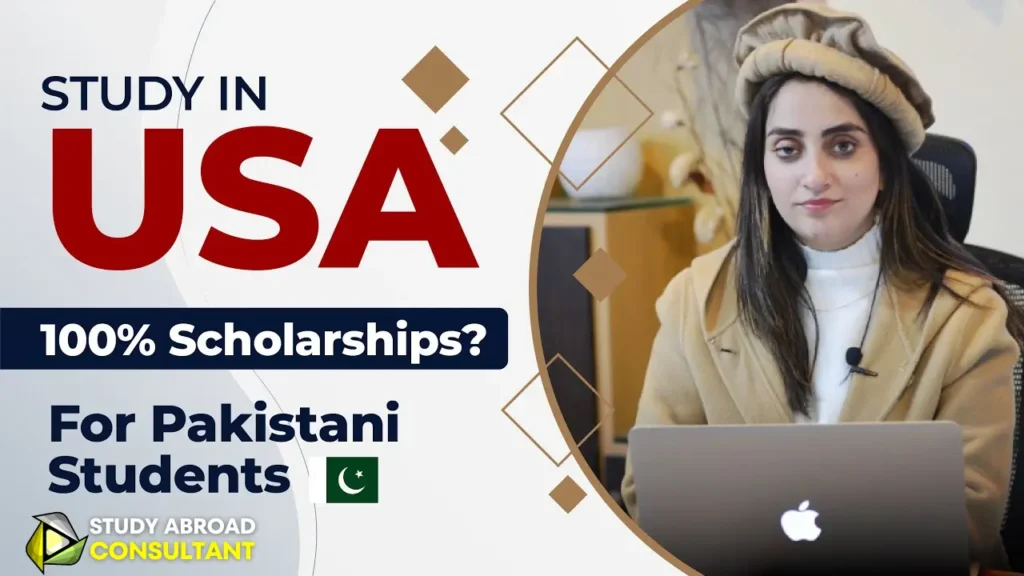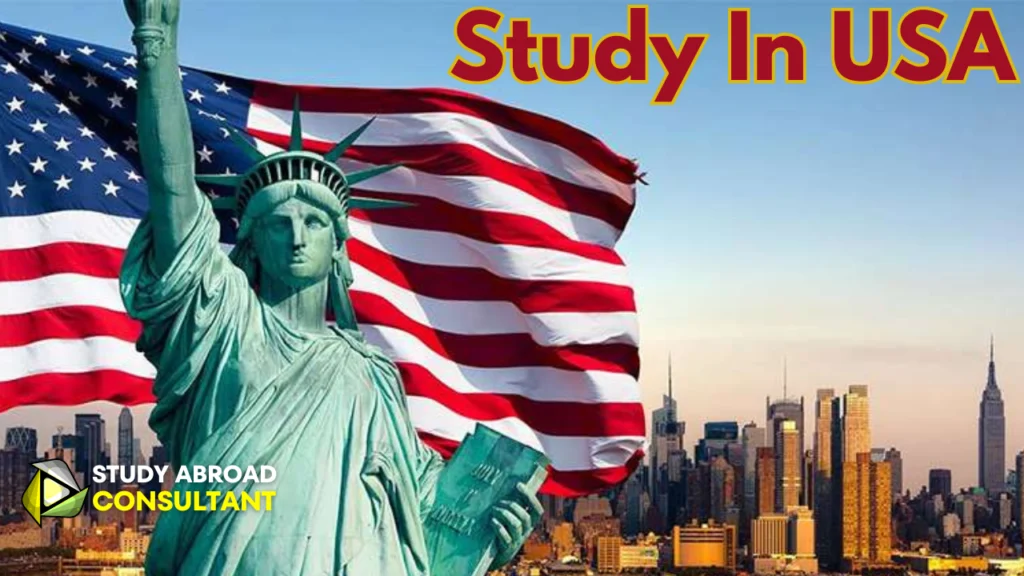Table of Contents
ToggleStudy in USA | Guide for Pakistani Students
Study in USA is a dream for many students around the world, including those from Pakistan. The USA is a desirable location for higher education because of its well-known colleges, varied culture, and plenty of chances for both professional and personal development. Pakistani students will find all the information they need to study in the USA, from application procedures to college life, in this guide.
What Makes Study in USA Fascinating?
World-Class Education: The USA is home to some of the best universities globally, such as Harvard, MIT, Stanford, and many others. These institutions offer cutting-edge research opportunities and a wide range of academic programs.
Diverse Academic Programs: Study in USA offer a abundance of courses across various fields, allowing students to pursue their interests and specialize in niche areas.
Cultural Diversity: Exposure to a multicultural setting while Study in USA is beneficial for networking and personal development.
Career Opportunities: The USA is a hub for many leading industries. Graduating from an American university can open doors to internships and job opportunities both in the USA and globally.
Application Process
Research: Research colleges and courses that can help you achieve your academic and professional objectives first. You can start by visiting official university pages, QS World University Rankings, and US News and World Report websites.
Standardized Tests: Standardized tests like the SAT or ACT are required by the majority of US colleges for undergraduate programs to Study In USA, while the GRE or GMAT are required for graduate programs. To further prove English competence, TOEFL or IELTS results are needed.
Application Materials: Get ready to submit your application, which should include your CV, statement of purpose, recommendation letters, and academic records. These records are essential for demonstrating your goals and achievements.
Financial Planning: Study In USA, education may be very expensive. Examine the financial aid, grants, and scholarships that are available to overseas students. Financial aid is something that many colleges specifically offer for overseas students.
Visa Application: Once admitted, apply for a student visa (F-1 visa). This process involves completing the DS-160 form, paying the SEVIS fee, scheduling and attending a visa interview at the US Embassy, and presenting the necessary documentation.

Visa Requirements
F-1 Visa
- Proof of acceptance by a SEVP-approved school.
- Evidence of finances to support the ability to pay for living and educational costs.
- Intent to return to home country after studies.
M-1 Visa
- Evidence of admission from a non-academic or vocational school recognized by the SEVP.
- Evidence of finances to pay for living expenses and tuition.
- Intend to leave the United States after their studies ends.
J Exchange Visa
- Sponsorship through an exchange program that the US Department of State has authorized.
- Evidence of having enough money to pay for costs.
- Intention to leave the exchange program and head back home.
USA Intakes and Academic Calendar
- Fall Intake :
August/September is the start of the primary intake season.
- Spring Intake :
Begins in January and has a shorter intake period.
- Summer Intake : Begins in May/June, limited programs available
Since they might change, it’s crucial to confirm the precise dates and deadlines for each institution to Study In USA.

Scholarships and Financial Aid
To lighten the financial load, Pakistani students can apply for many scholarships:
Fulbright Scholarship: This scholarship, which is funded by the US government to Study In USA, includes living expenses, health insurance, and tuition.
Hubert H. Humphrey Fellowship Program: A non-degree program that provides excellent opportunities for career advancement.
University-Specific Scholarships: International students can apply for need- and merit-based scholarships from several colleges to Study In USA. For further information, visit the university’s website and look under the financial assistance area.

Life in the USA
Guidance: International students can get help adjusting to campus life and the new culture by participating in orientation programs offered by many universities
Residing:Although off-campus housing is an option that can be investigated, first-year students often choose to live on campus. Universities often provide tools to assist students in locating suitable residence.
Cultural Adaptation:
Moving to a new country can be challenging. Engage in campus activities, join student organizations, and connect with fellow international students to ease the transition.Part-Time Work: International students on an F-1 visa are allowed to work on campus for up to 20 hours per week during the academic year and full-time during breaks. This can help manage expenses and gain work experience.
Health Insurance: Health insurance is mandatory for international students in the USA. Universities often provide health insurance plans, but private insurance can also be considered.
Opportunities for a Career
Internships: Internships are a common feature of academic programs and are essential for obtaining real-world experience.
Practical Training Option (OPT): F-1 visa holders can apply for OPT after receiving their degree, which enables them to work in the country for up to 12 months (or 36 months for STEM graduates).
Connecting with Others: To establish connections in your industry, take advantage of networking opportunities provided by alumni groups, employment fairs, and university activities.
Conclusion
Study in USA offers Pakistani students an opportunity to receive a world-class education and experience life in a dynamic country. While the application process and the transition may seem intimidating, the long-term benefits of study in USA make it a worthwhile endeavor. By planning carefully and taking advantage of available resources, Pakistani students can make the most of their educational journey in the United States.
Frequently Asked Questions (FAQs):
1. Which standard tests are necessary to apply to universities in the United States?
- Standardized tests like the SAT or ACT are required by the majority of US colleges for undergraduate programs, while the GRE or GMAT are required for graduate programs. In addition, results from the TOEFL or IELTS must be submitted to prove English skill.
2. How can I finance my study in USA?
- There are several options for funding your education, such as grants, financial aid, and scholarships. International students can apply for university-specific financial help as well as scholarships like the Fulbright Program.
3. How does one apply to institutions in the United States?
- Researching institutions, taking standardized exams, preparing application documents (resumes, letters of reference, transcripts, and statements of purpose), applying for scholarships, and, if accepted, applying for a student visa are all part of the application process.
4. Can international students work while studying in the USA?
During the academic year, foreign students with an F-1 visa are permitted to work on campus up to 20 hours per week, and during breaks, they are allowed to work full-time. Following graduation, students may apply for up to 12 months of labor (36 months for STEM graduates) of Optional Practical Training (OPT) in the United States.
Also Read : Career Counselling | Brighten Your Career

